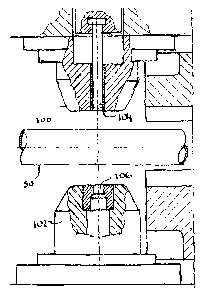Some of the information on this Web page has been provided by external sources. The Government of Canada is not responsible for the accuracy, reliability or currency of the information supplied by external sources. Users wishing to rely upon this information should consult directly with the source of the information. Content provided by external sources is not subject to official languages, privacy and accessibility requirements.
Any discrepancies in the text and image of the Claims and Abstract are due to differing posting times. Text of the Claims and Abstract are posted:
| (12) Patent Application: | (11) CA 2370811 |
|---|---|
| (54) English Title: | SEAT FRAME STRUCTURE AND METHOD FOR FORMING |
| (54) French Title: | STRUCTURE DE CHASSIS DE SIEGE ET METHODE DE FORMAGE |
| Status: | Deemed Abandoned and Beyond the Period of Reinstatement - Pending Response to Notice of Disregarded Communication |
| (51) International Patent Classification (IPC): |
|
|---|---|
| (72) Inventors : |
|
| (73) Owners : |
|
| (71) Applicants : |
|
| (74) Agent: | GOWLING WLG (CANADA) LLP |
| (74) Associate agent: | |
| (45) Issued: | |
| (22) Filed Date: | 2002-02-06 |
| (41) Open to Public Inspection: | 2003-08-06 |
| Availability of licence: | N/A |
| Dedicated to the Public: | N/A |
| (25) Language of filing: | English |
| Patent Cooperation Treaty (PCT): | No |
|---|
| (30) Application Priority Data: | None |
|---|
The present invention provides a method of forming a transversely
extending passage through a tubular seat frame for receiving a headrest guide
tube
and includes the steps of:
(i) forming first and second diametrically opposed axially aligned
openings through the tubing;
(ii) flowing metal from around the first opening through the tube and
through the second opening while expanding the first opening to form at
least part of an inner wall of the passage;
(iii) flowing metal from around the second opening outwardly from the
tube while expanding the second opening to form an outer wall of the
passage extending about the inner wall.
Note: Claims are shown in the official language in which they were submitted.
Note: Descriptions are shown in the official language in which they were submitted.

2024-08-01:As part of the Next Generation Patents (NGP) transition, the Canadian Patents Database (CPD) now contains a more detailed Event History, which replicates the Event Log of our new back-office solution.
Please note that "Inactive:" events refers to events no longer in use in our new back-office solution.
For a clearer understanding of the status of the application/patent presented on this page, the site Disclaimer , as well as the definitions for Patent , Event History , Maintenance Fee and Payment History should be consulted.
| Description | Date |
|---|---|
| Inactive: IPC from MCD | 2006-03-12 |
| Inactive: IPC from MCD | 2006-03-12 |
| Inactive: IPC from MCD | 2006-03-12 |
| Inactive: IPC from MCD | 2006-03-12 |
| Time Limit for Reversal Expired | 2006-02-06 |
| Application Not Reinstated by Deadline | 2006-02-06 |
| Deemed Abandoned - Failure to Respond to Maintenance Fee Notice | 2005-02-07 |
| Letter Sent | 2003-11-21 |
| Inactive: Single transfer | 2003-09-25 |
| Application Published (Open to Public Inspection) | 2003-08-06 |
| Inactive: Cover page published | 2003-08-05 |
| Letter Sent | 2002-04-26 |
| Inactive: IPC assigned | 2002-04-17 |
| Inactive: First IPC assigned | 2002-04-17 |
| Inactive: IPC assigned | 2002-04-17 |
| Inactive: Courtesy letter - Evidence | 2002-03-12 |
| Application Received - Regular National | 2002-03-06 |
| Filing Requirements Determined Compliant | 2002-03-06 |
| Inactive: Filing certificate - No RFE (English) | 2002-03-06 |
| Inactive: Single transfer | 2002-03-04 |
| Abandonment Date | Reason | Reinstatement Date |
|---|---|---|
| 2005-02-07 |
The last payment was received on 2004-02-05
Note : If the full payment has not been received on or before the date indicated, a further fee may be required which may be one of the following
Please refer to the CIPO Patent Fees web page to see all current fee amounts.
| Fee Type | Anniversary Year | Due Date | Paid Date |
|---|---|---|---|
| Application fee - standard | 2002-02-06 | ||
| Registration of a document | 2002-03-04 | ||
| Registration of a document | 2003-09-25 | ||
| MF (application, 2nd anniv.) - standard | 02 | 2004-02-06 | 2004-02-05 |
Note: Records showing the ownership history in alphabetical order.
| Current Owners on Record |
|---|
| TRITON TUBULAR COMPONENTS CORP. |
| Past Owners on Record |
|---|
| BILL FRENKE |
| JOHN MCWHINNIE |